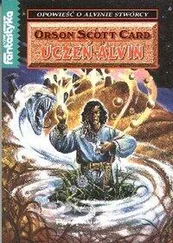Like the American airmen who would one day inhabit these same cellblocks, the Vietnamese inmates learned to retaliate. In January 1930, they declared Hỏa Lò’s first hunger strike. United, they protested the food they received, and the wardens begrudgingly improved their rations thereafter. For the next twenty years, prisoners won similarly small but important victories through unified resistance. On several occasions, the French purged the prison population of its leaders, either killing them or exiling them to other facilities. Less overt but equally important defiance came in the form of covert communication. The Vietnamese developed invisible ink from stolen medical supplies and stashed notes throughout the prison. The authorities knew their control depended on isolating prisoners; the prisoners knew their lives hinged on maintaining contact with one another. Some of those same prisoners would return to Hỏa Lò as wardens themselves when the cells began to fill with Americans; North Vietnam’s prime minister and its general secretary had also served long prison terms during the 1930s and 1940s. The North Vietnamese would not forget the lessons of their own captivity.
In this new conflict, North Vietnam would use Hỏa Lò Prison as part of its plan to defeat—or more precisely outlast —the United States and whatever U.S. ally might hold power in the South Vietnamese capital of Saigon. The North’s three-pronged strategy included a committed military campaign, international diplomacy and political choreography, and proselytizing—influencing the minds and hearts of citizens and soldiers in North Vietnam, South Vietnam, and the United States. General Võ Nguyên Giáp advocated “using the enemy against the enemy,” and the Ministry of National Defense directed the Enemy Proselytizing Department (EPD) to gather intelligence from any American POWs. The government would also use prisoners for propaganda and attempt to indoctrinate them with Communist dogma. The Ministry of Public Safety, an organization similar to the Soviet KGB, would run the prisons and shared responsibility for interrogating prisoners with the EPD. They were to extract information and propaganda statements, then deliver the results to the Ministry of National Defense, for military use, or to the Office of the Prime Minister, which would broadcast the material through national and international print, television, and radio. These groups—collectively called the Camp Authority—aimed to use POW statements to win sympathy and erode domestic and foreign support for the Americans. North Vietnamese leaders considered antiwar propaganda vital, and they would place heavy pressure upon the Camp Authority to obtain it.

Hỏa Lò Prison, the “Hanoi Hilton,” looking east by southeast. The main gate is top, center.
When he arrived at Hỏa Lò Prison, Bob Shumaker knew none of this. He just found an old, dirty colonial garrison. There in his holding room, he could only speculate that elsewhere in the facility, jailers had locked away Ev Alvarez, who Shu knew was the first aviator taken captive. Indeed, Alvarez was locked in Room Twenty-four, less than 100 feet away.
Since Shu had worn a blindfold throughout his drive into Hanoi, it took his eyes some time to readjust. Observing his new room more closely, he found it not unpleasant and, in fact, fairly spacious—perhaps 12 by 15 feet—more like an office than a prison cell. A desk even stood along one wall. On the tile floor, he found a woven bamboo bedroll, along with a toothbrush and toothpaste tube, a wash rag, coarse brown toilet paper, a bar of brown soap, a mosquito net, and a thin blanket. A guard soon entered the room and took his flight suit, leaving Shu what seemed like civilian clothes: khaki pants and a shirt. He also received a pair of sandals made from tire treads. The guard said, “Xô,” Vietnamese for “bucket,” and pointed to a corner. There, Shu found the most demeaning item of all, his “bo,” a three-gallon pail that he quickly deduced would serve as his personal latrine.
Roughly six hours after Shu arrived, a guard outfitted in green fatigues and sandals similar to his own opened the door and motioned the captive into the courtyard outside. As he left, Shu noticed the number “19” by his door. The guard pushed him down a short open-air passageway of dusty terra-cotta tiles to a large room with French doors, heavy curtains, and concrete flooring much like his own room. Its door was numbered “18.” When he entered, he found three officers seated behind a table covered with blue cloth. Above them, a lightbulb dangled from a plaster ceiling that also held a meat hook. A low concrete block sat before the officers; Shu gathered they intended that to be his seat. He squatted down onto the block and looked up at his captors. The interrogators did not state their names, so Shu privately assigned nicknames. He dubbed the apparent ringleader Owl, for his round face, short body, and deep-set eyes. Owl introduced himself as commandant of Hỏa Lò Prison and pulled up his sleeves to show Shu ghastly scars from his own imprisonment in Maison Centrale.
Shu began by stating his basic identifying information, “Shumaker, Robert H.; Lieutenant Commander; 548955; May 11, 1933.” The interrogators smiled and thanked him, then inquired about his squadron, his training, his airplane, his ship, his family, and his opinions. It reminded Shu of a high school quiz. If Owl expected answers, however, he was disappointed. In response, Shu just asserted his rights under the 1949 Geneva Convention Relative to the Treatment of Prisoners of War. The treaty, signed by North Vietnam, the United States, and 102 other countries, defined the rights of POWs and outlined rules to ensure their humane treatment. It also prohibited captors from extracting anything more than a prisoner’s name, rank, service number, and date of birth. Shu had given everything he intended to give.
When he invoked Geneva protection, Owl scoffed, “You are not a prisoner of war. You are a war criminal! And we will try you before the Vietnamese people.”
Owl explained that, in North Vietnam’s view, the Geneva Convention did not apply to the present conflict—war had not been declared between his country and the United States. Even if it had, he said, the Geneva Convention granted no protection to pilots who had attacked civilians, which he accused Shu of doing. The soft-spoken engineer maintained his characteristically calm composure and simply took note that trial was a possibility. Whether the North Vietnamese honored the Geneva Convention or not, he planned to stick by the U.S. military’s Code of Conduct, which governed the behavior of servicemen captured by an enemy.
After learning how POWs struggled against Communist interrogators and harsh conditions during the Korean War, the Department of Defense had decreed that its men needed better preparation and guidelines to follow in captivity. So on August 17, 1955, in an executive order, President Dwight Eisenhower set forth the Code of Conduct for Members of the Armed Forces of the United States. Its words would inform every American act of resistance in North Vietnam.
ARTICLE I
I am an American fighting man. I serve in the forces which guard my country and our way of life. I am prepared to give my life in their defense.
ARTICLE II
I will never surrender of my own free will. If in command I will never surrender my men while they still have the means to resist.
ARTICLE III
If I am captured, I will continue to resist by all means available. I will make every effort to escape and aid others to escape. I will accept neither parole nor special favors from the enemy.
Читать дальше













